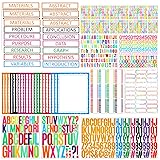All Categories
The Whole Shebang: A State-of-the-Universe(s) Report
Share Tweet
*Price and Stocks may change without prior notice
*Packaging of actual item may differ from photo shown
- Electrical items MAY be 110 volts.
- 7 Day Return Policy
- All products are genuine and original








About The Whole Shebang: A State-of-the-Universe(s) Report
Product Description A non-technical account of recent astronomical research makes all that is known about the universe accessible to the average reader, in a study that integrates scientific personalities with hard facts, vivid explanations, and authoritative speculation Amazon.com Review Plenty of books try to explain the origin of the universe, but despite the ascendance of the Big Bang theory, numerous details of that theory remain in flux as new observations are made and new hypotheses formed (and then confirmed or rejected). Timothy Ferris's The Whole Shebang is an up-to-date account of the various mechanisms believed to have contributed to the universe as we now know it, from the Big Bang itself to inflation to superstrings. The Whole Shebang eschews mathematics and formulae and explains cosmological concepts in clear and enticing prose. If you need an update on the state of the universe, you'll find it here. From Library Journal Ferris is a journalist who has written several successful popular works about modern astronomy (e.g., The Mind's Eye, Bantam, 1993). Here he reviews the current state of scientific cosmology, including the now-considerable overlap between astronomical findings and the theories of elementary particle physicists. (The parenthetical plural in the title is an allusion to theories that suggest the cosmos contains a multiplicity of universes.) Ferris adheres to the orthodox Big Bang theory, giving little attention to its critics, but he is candid about the many uncertainties in modern cosmology. He writes clearly, often with considerable eloquence. But given the intrinsic difficulties and unavoidable jargon of the field, a lay reader will have to give this book close attention to get its full value. Highly recommended for public and academic libraries. -?Jack W. Weigel, Univ. of Michigan Lib., Ann Arbor Copyright 1997 Reed Business Information, Inc. From Kirkus Reviews As Virgil led Dante through the thickets and circles of the inferno, so Ferris, a science writer's science writer, guides the reader through the clouds and bubbles, the singularities and uncertainties that characterize cosmology today. What is so rewarding about the Ferris tour is that he is authoritative without being prescriptive; even-handed without being all-accepting; and above all rational. When an author wites of James Trefil commenting about ``looking in the face of God,'' or Stephen Hawking concluding that a unified theory of physics would mean that ``we would know the mind of God,'' and describes it as so much God-mongering, you know you are in safe hands. Yet thinking about the structure and origins of the universe, and about the weird world of quantum mechanics, has much of the nonrational about it. Ferris (Coming of Age in the Milky Way, 1988, etc.) not only provides chapter and verse on the paths leading from Einstein and Bohr to Feynman and Gell-Mann to Wheeler and Bohm, but he also deftly limns the backgrounds and personae of today's rival theory-makers. In the end we find ourselves contemplating a 10-dimensional universe (possibly one in a ``multiverse''), in which six of the original dimensions shrink to all-but-nothingness, leaving our own familiar four (space-time) populated by microcosmic superstrings. The universe is essentially ``flat'': Wherever we look it appears to be made of the same stuff relatively evenly distributed among galaxies and dark matter and the like. Close up, random fluctuations account for the accretions of matter that gave rise to our ``local group'' (which includes the Milky Way) and other larger clusterings. Indeed, it is the tools of Hubble and other ingenious probes that are turning cosmology into a science. There is much joy and beauty in this passage from speculation to demonstration, and we have Ferris to thank for his superb rendering, both of the shebang and of the science that studies the shebang. (Book-of-the-Month Club split main selection; History Book Club alternate



























